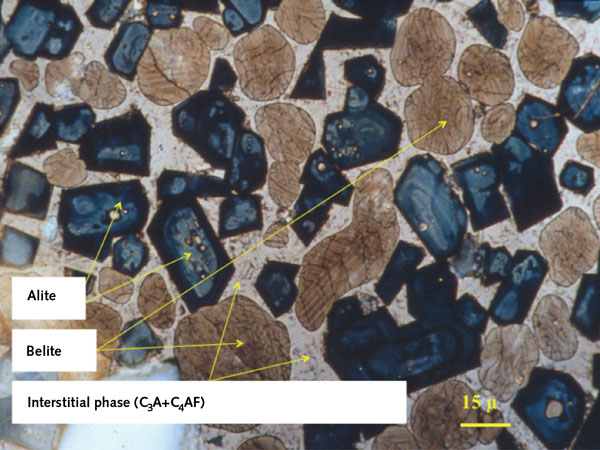New clinkers
The push to reduce CO2 emissions will impact the way that cement plants are designed and operated in the future. This third article in a series of five explores some of the potential outcomes of the carbon-constrained world and their impacts on the cement industry. By John Kline & Charles Kline, Kline Consulting, USA.

Figure 1: polished section of a clinker granule seen under optical microscopy.
Alite (C3S) blue crystals, belite (C2S) brown crystals
It is widely accepted that there are three traditional levers for CO2 reduction in cement manufacture:
• energy efficiency
• clinker substitution
• the use of biogenic or renewable fuels.
The last two levers were explored in ICR November 2013 and January 2014, respectively. This third installment focusses on the new and evolving lever of clinker reformulation.
Several of the major European cement manufacturers are working on changing the basic recipe for Portland cement clinker to reduce the CO2 footprint while maintaining the fundamental usage qualities for cement and concrete.

